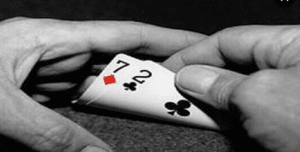The Art of Bluffing: How to Master Poker’s Most Important Skill
Poker is a complex game combining strategy, psychology, and psychological warfare; at its heart lies the art of bluffing, which can have a tremendous impact on real-money success.

Bluffing is one of the key skills required in poker, capable of turning the tide of a game and outwitting even the most experienced opponents. For those eager to test their bluffing abilities with real stakes, for real money poker play, there are sites such as https://legjobbmagyarcasino.com/valodi-penzes-casino that offer different opportunities.
Mastering this intricate art requires not only understanding its mechanics but also reading opponents and making strategic decisions that can drastically change the outcome of games. When applied to gambling, these abilities become even more crucial as they will determine both your success and financial results.
Understanding Bluffing
Bluffing involves pretending to have a stronger hand than you actually do, aiming to persuade opponents to fold better hands. Its success hinges on manipulating opponents’ perceptions, making them believe you hold winning hands. To bluff effectively, you must understand game dynamics, such as pot size, betting patterns, and opponents’ tendencies. Balancing risk and reward and knowing the optimal timing for your bluffs is crucial for successful execution.
Reading Your Opponents
Successful bluffing hinges on reading your opponents’ behavior, betting patterns, and reactions. Look for hesitations, rapid betting, or body language changes to gauge their confidence. Tailoring your bluff to players who are likely to fold under pressure or call any bet can significantly improve your odds of success.
Timing and Position
Timing and position are crucial for effective bluffing. Bluffing is more successful when done after observing opponents’ reactions, which helps in making informed decisions. Acting later in the betting round allows you to gauge others’ responses, while early-position bluffs may be less convincing due to the expectation of stronger hands.
Bet Sizing
Betting size is crucial in bluffing. A well-sized bet can convincingly represent a strong hand, while too small a bet may not pressure opponents to fold, and too large a bet might reveal your bluff or seem overly aggressive. Choose a bet size that aligns with the story you aim to tell.
Maintaining Consistency
A key part of being an effective bluffer is keeping a consistent strategy when it comes to bluffs and value bets. Experienced opponents will soon pick up on any patterns in your play that seem too frequent and start calling more often, leaving opponents guessing. Achieve success through striking a balance between bluffs and value bets will keep your play unpredictable, keeping opponents guessing!
Knowing When to Fold
Not every bluff will succeed, and understanding when and how to cut your losses is an integral component of bluffing. If it appears unlikely your bluff will succeed or the situation has altered significantly, sometimes folding can save both chips and time by abandoning an attempt altogether. By understanding when and why bluffs should be abandoned early, players can avoid costly errors while creating a solid overall strategy.
Mastering bluffing in poker requires psychological insight, strategic planning, and adaptability. It involves reading opponents, choosing the right moments and bet sizes, and maintaining balance. By honing these skills and understanding bluffing’s nuances, you can elevate your poker game, outwit rivals, and enhance your overall strategy at the table.
